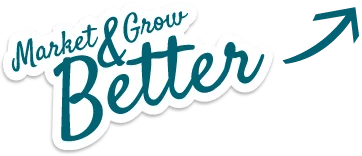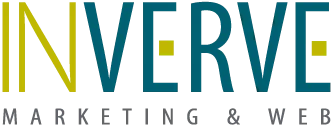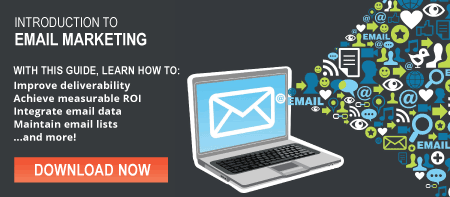
If you think of your inbound marketing strategy as a vehicle moving your business marketing efforts toward new sales opportunities, then consider your content the fuel that powers it up. The content you create for your website and social media is ultimately responsible for communicating your message to visitors, leads, customers, and promoters. Without content, there is nothing to present or attract.
Some of the benefits of content creation include:
- Increasing visibility of your brand
- Developing lasting relationships with your audience
- Establishing thought leadership within your industry
- Generating traffic to your site
- Increasing communication through social shares and comments
- Helping your client move through the buyer’s journey quickly
The best way to ensure your business gets the most out of these benefits is by establishing a content marketing strategy. Not only will a strategy keep your business on track with content creation, but it will also help your marketing campaigns understand and attain your broader business goals. As you build your content marketing strategy, make sure to outline the following essentials:
- Goals and objectives
- Target audience
- Types of content
- Content promotion
Let’s take a closer look at these four components:
1. Goals and Objectives
What is the main purpose of creating your content marketing plan? What are you hoping your content will achieve for your organization? What value are you looking to provide in your content? These are the first questions you should ask yourself before documenting your content marketing strategy. By developing clear and realistic goals early on in the content marketing process, you will have a much easier time staying on track with your content creation and distribution. Goals will also help you measure the effectiveness and success of your content marketing strategy down the road.
Your goals and objectives should align with your broader business goals, rather than just the content itself. Focus on business metrics like traffic, leads, and sales, not how many blogs you will publish over the next quarter or how many clicks you expect your Facebook posts to average.
Some examples of common content marketing goals include:
- Increasing brand awareness in key markets
- Increasing customer engagement
- Increasing sales revenue
- Increasing traffic to your website
Having business-driven goals will also be valuable when presenting your content and content strategy to company stakeholders who are not familiar with content marketing or may be skeptical of the process.
2. Target Audience
Once goals and objectives for your content marketing strategy have been established, you should define the target audience or buyer persona that will guide your content creation moving forward. By knowing your target audience, you can produce more useful, relevant content that potential customers will actually want to read and convert on.
When defining your buyer persona, be sure to gather as much information about them as possible. Determine that persona’s characteristics, motivations, behavior patterns, and interests. Write your content based on the information you gather. You can gather this information by monitoring social media, creating ways for your website to capture responses, or conducting persona interviews with current customers or prospects.
Some examples of common person interview questions include:
- What is their job and level of seniority?
- What does a day in their life look like?
- What are their pain points?
- Where do they go for information?
The more you know about the different target audiences and personas within your industry, the easier it will be to write and design your content.
3. Types of Content
When it comes to creating content, plenty of different format options exist. The trick is choosing the right content format, one that will appeal to your target audience and effectively communicate your message. By using the “buyer’s journey,” or the active research process people go through leading up to a purchase, you can determine what kind of content to use based on where your persona is in the buying process.
Here are examples of content that relate to each stage of the Buyer’s Journey:
Awareness Stage
In the awareness stage, the potential buyer is experiencing and expressing symptoms of a problem or opportunity. They are most likely entering search terms in Google to clearly understand more about what it is they are looking for. In this case, you would want to produce top-of-the-funnel content including:
- Educational blogs
- Whitepapers
- Guides or eBooks
- Industry research or analyst reports
Consideration Stage
At this stage, the potential buyer has clearly defined and given a name to their problem or opportunity. They now want to know what options are available to them. You can communicate these options by creating middle-of-the-funnel content, including:
- Product comparison guides
- Comparison whitepapers
- Webinars
- Podcasts
Decision Stage
In the decision stage of the Buyer’s Journey, the potential buyer has now decided on their solution strategy, method, or approach. As the content creator, this is your opportunity to rein the buyer in and give specific information about your organization and services. Suggested content for this stage includes:
- Case studies
- Customer testimonials
- Free trial or live demo
- Free consultation
By using the Buyer’s Journey to choose which content to use in your content marketing strategy, you will ensure your content is relevant and attractive to the buyer at any step of their journey.
4. Content Promotion
The last key component of your content marketing strategy is content promotion. Writing all that unique, targeted content will not do your business any good if you are not sharing it with the world. After creating your content, you should determine how to promote each piece. This should include where to promote it, for how long, how many times, and how much money will be spent.
Content promotion can take several different forms, including email marketing and inserting call-to-action buttons on web pages and blogs, but the easiest way is social media. Social media is free, reliable, and widely used, making it one of the most popular ways to promote content to any target audience.
Here are some helpful tips for promoting content on social media:
- Build a company page on social media platforms such as Facebook, Twitter, and LinkedIn.
- Share your content regularly on the company page.
- Use keywords as hash tags so that your posts are easily searchable by your target audience.
- Use Facebook Insights or Twitter Analytics to determine the best time of day to post your content.
Topics: marketing






